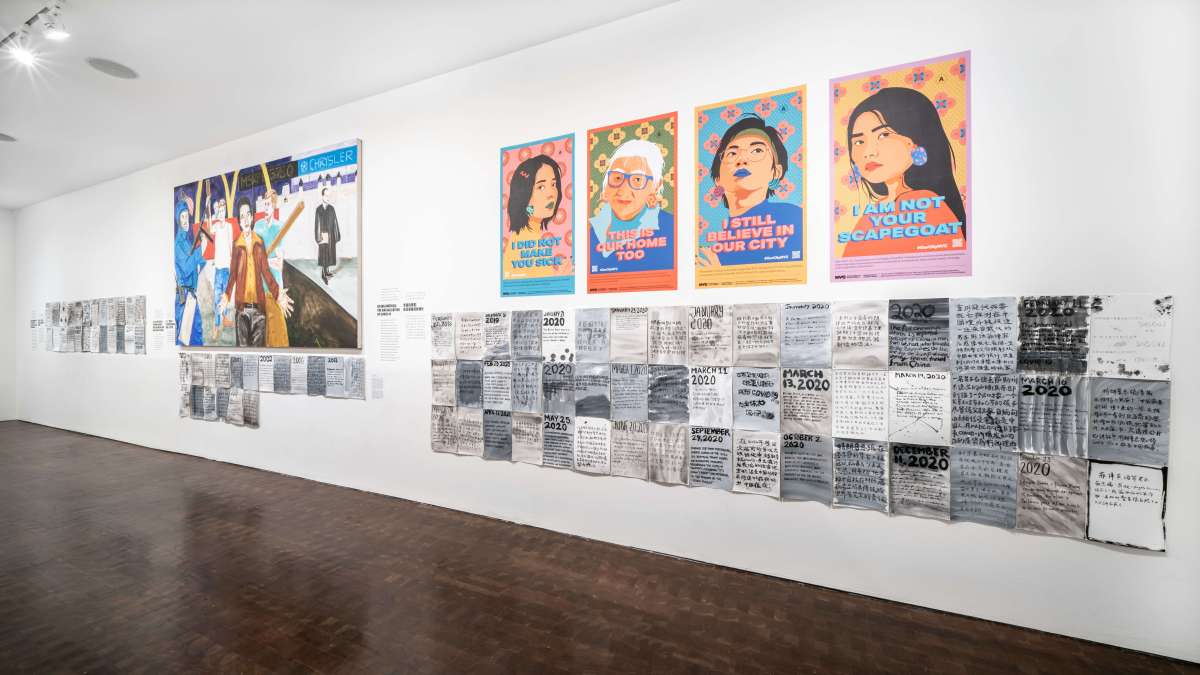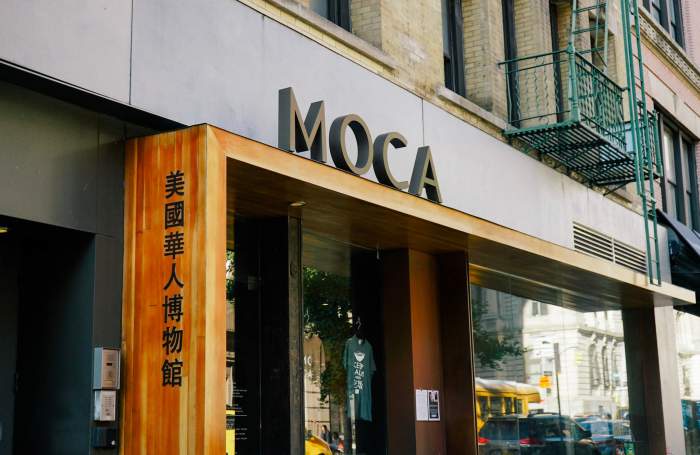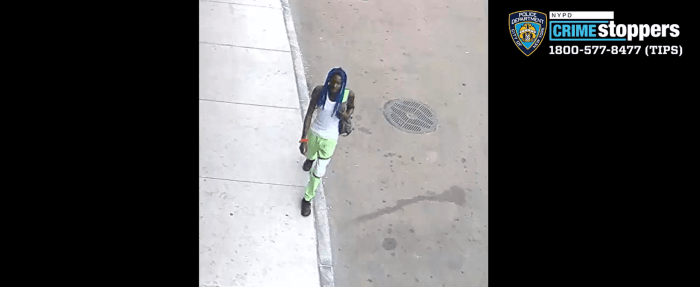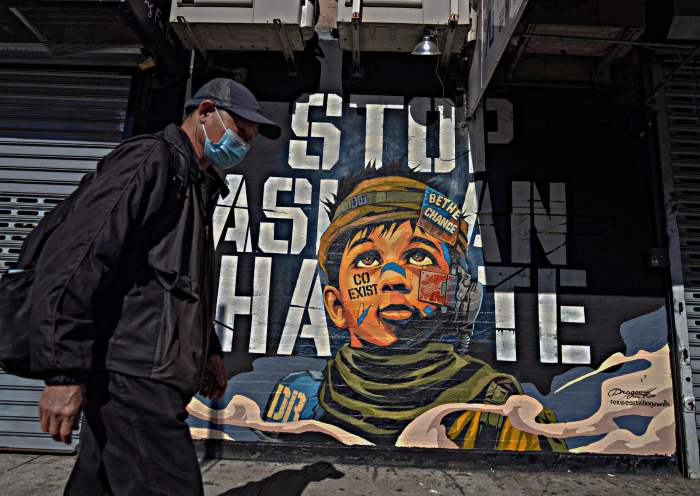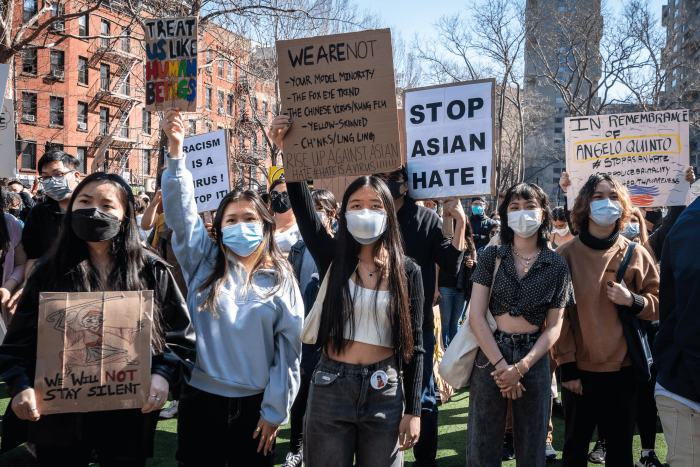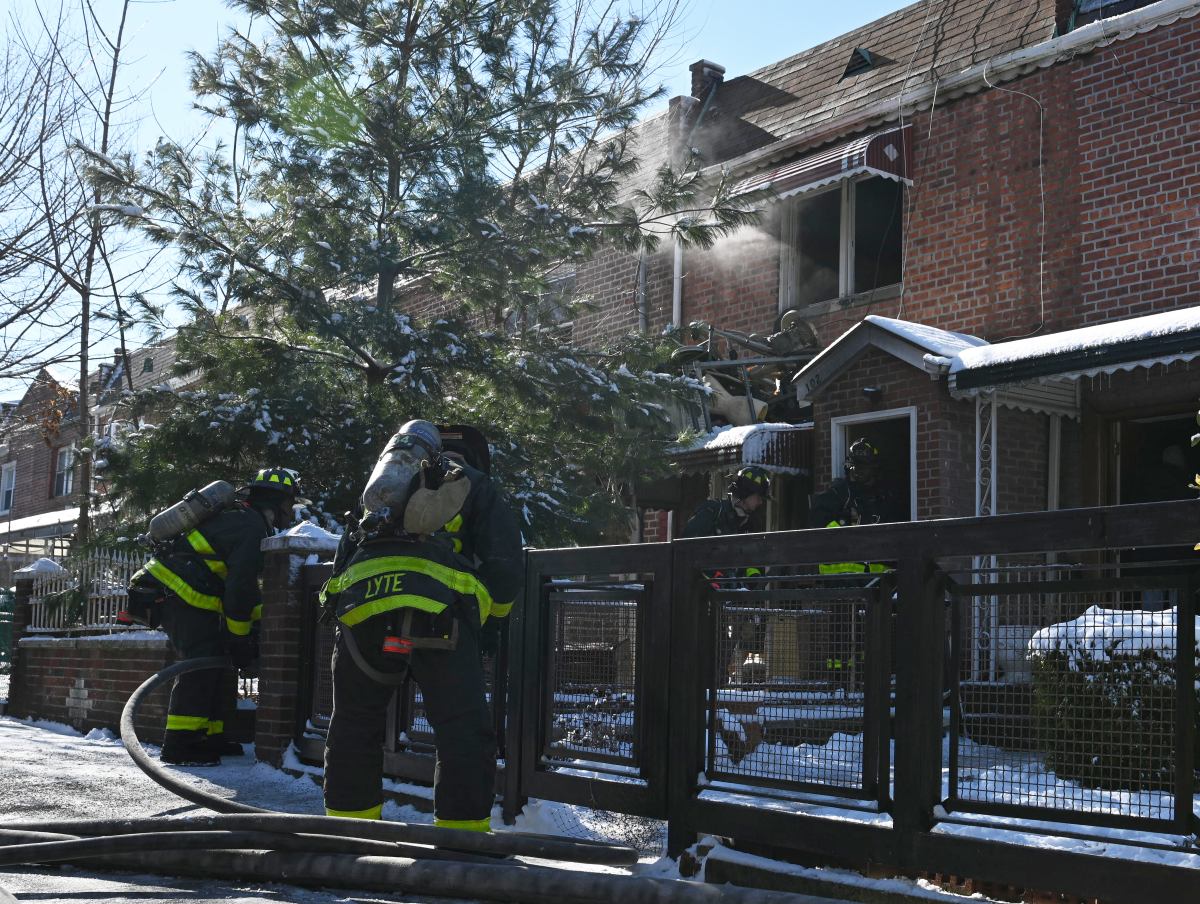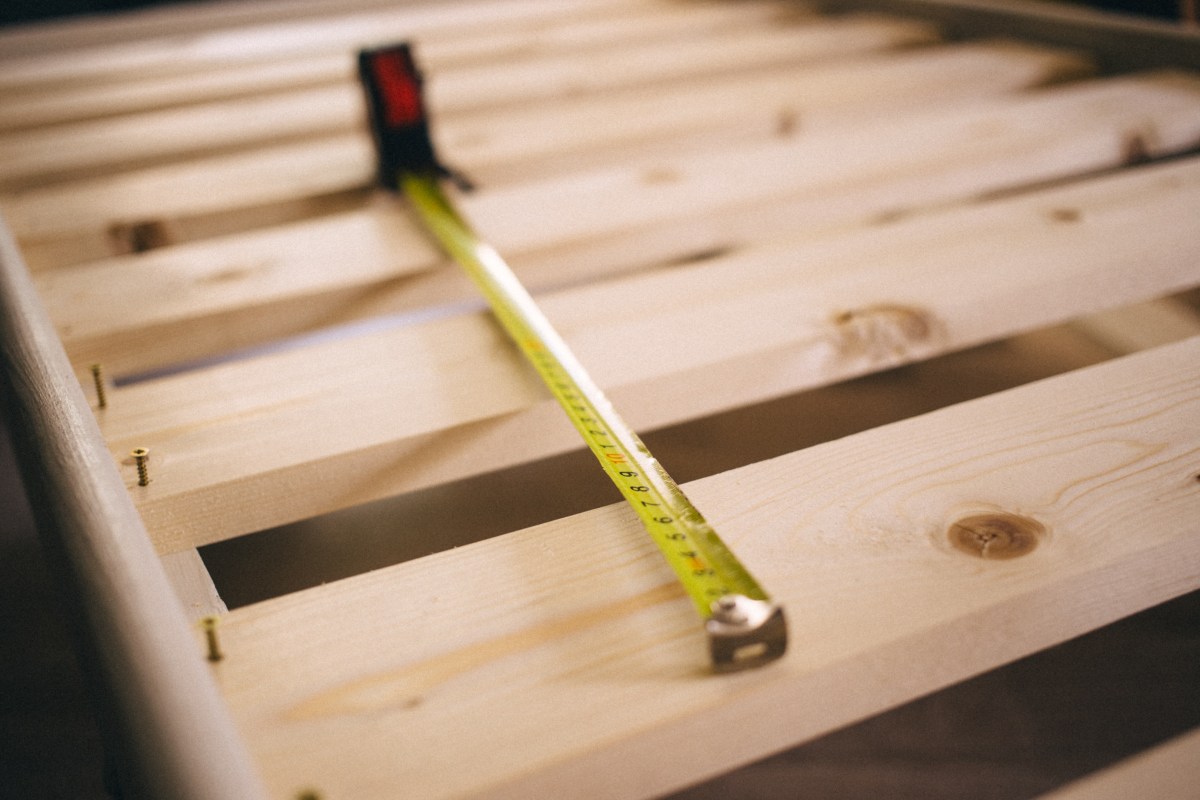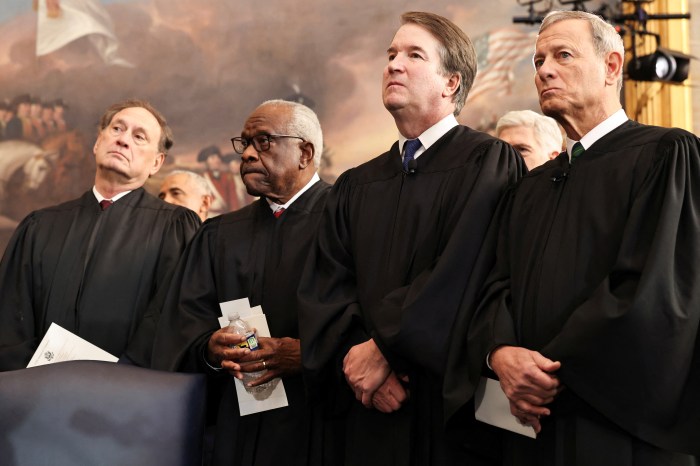The Museum of Chinese in America announced Thursday its exhibit “Responses: Asian American Voices Resisting the Tides of Racism,” will be extended through March 2022.
The exhibit details “the historical roots of anti-Asian and Asian American Pacific Islanders (APPI) racism from the early days of American history until the rise of anti-AAPI racism and violence today,” according to a press release from the Museum of Chinese in America.
There have been more than 9,000 anti-Asian American Pacific Islander hate crime incidents since March 2020.
“Now more than ever, when anti-Asian hate is heightened around the country, we’re proud to extend our exhibition to serve as a voice for the Asian and Chinese American community, and to help heal through education at this crucial moment” said Nancy Yao Maasbach, president of the Museum of Chinese in America in the release. “We’re committed to serving as a cultural pillar and educational space so that we can broaden the American narrative to be inclusive for all.”
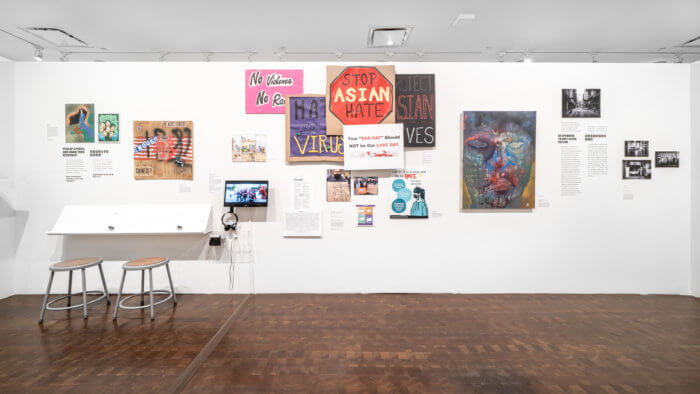
The free exhibit launched last summer after the museum was closed for more than a year due to COVID-19 and a five-alarm fire that resulted in 85 percent of the museum’s artifacts needing restoration.
Responses includes a hand-painted timeline that details 200 years of racism against the Asian American Pacific Islanders community including discriminatory laws and policies, riots and intimidation campaigns, according to the release.
Henry Tang, who visits the museum on a regular basis, said the challenges Asian Americans have gone through over the decades is reflected well throughout the exhibition.
“Bringing it (the history) alive is very important so that the 21st century public observers, whether they are Asians or non-Asians, become aware of that history, which unfortunately, from a historical point of view, was not talked about as much inside the American educational system,” Tang said.
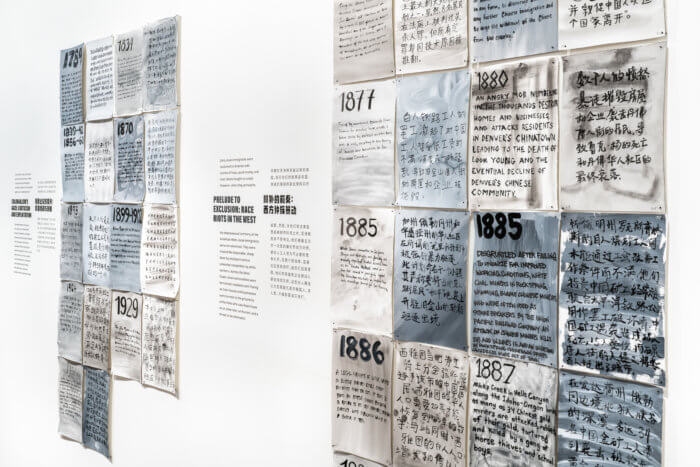
The exhibition explains the roots of anti-Asian and Asian American Pacific Islanders racism that is still happening today.
“The exhibition brings a huge awareness to the public, and more people should visit it to understand it,” Tang said.
A collection of artworks, video footage, essays and artifacts is also showcased in the exhibit. The materials were “submitted by people across the nation through MOCA’s One World COVID-19 Special Collection, a year-long initiative designed to tell a multi-dimensional story of the pandemic through an Asian American lens,” the release said.
Music and dance have also been incorporated into the exhibit. Music composers ARKAI and modern dance company J CHEN PROJECT interpret the exhibition’s key themes through their artistic mediums.
“Chinese American and Asian American culture in this country is so multifaceted. You can look at the education side, entertainment side, culinary side, there’s so many aspects, but this exhibition ties together, from beginning to end, the multifaceted experience both positive and negative,” Tang said.
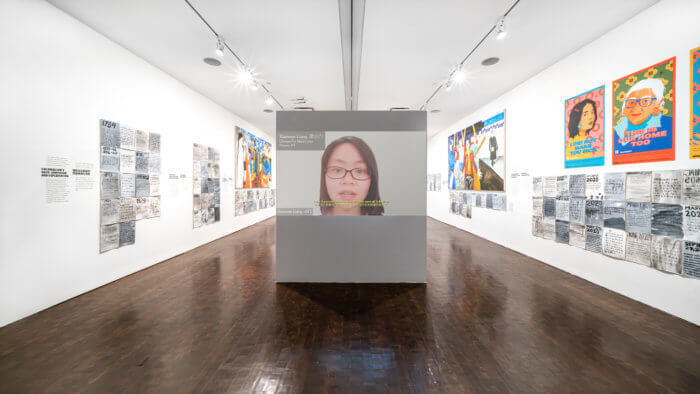
If people visit the museum with open eyes, they will be rewarded with a rich understanding of the challenges that Asians faced as new immigrants to America and their struggles to assimilate and integrate, Tang said.
“With a spike in hate crimes across the country, MOCA is a vital resource for educating the public about our history and the contributions we have made as Asian Americans,” said P.S. 124 Principal Alice Hom in the release. “Responses encompasses the historical roots of anti-Asian racism from the past until today. We’re happy MOCA extended this exhibition to help broaden the American narrative to be inclusive for all.”
Visitors can also view the exhibit digitally through Bloomberg’s Connects app.
“Our hope is to educate an even wider audience by sharing stories based on the historical roots of anti-Asian and AAPI racism to evoke change and to broaden the American narrative for all,” said artist and educator Michael Sheng in the release.
Last Fall, the museum also opened MOCA Workshop, a reading room that features the Museum’s library of Chinese and Asian American literature and houses its collections of over 85,000 artifacts that document the Chinese experience in America.
Visitors can access digitized images of objects, sculptures, letters, photos and videos from MOCA’s collections for free on the Google Arts & Culture digital platform. A virtual exhibition “Trial by Fire: The Race to Save 200 Years of Chinese American History,” which details the fire that occurred at the museum in January 2020, can also be viewed through this platform.
The museum is open Thursday through Sunday from 11 a.m. to 6 p.m. except on Thursdays when the museum remains open until 9 p.m. The digital exhibits can be accessed at any time. The museum is located at 215 Centre Street.



